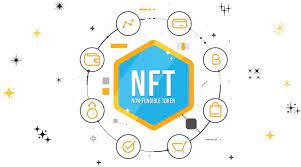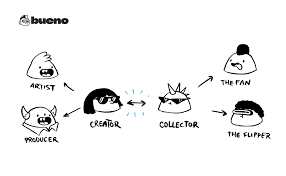In recent years, the digital landscape has witnessed a groundbreaking revolution with the advent of Non-Fungible Tokens (NFTs). These unique and indivisible cryptographic assets have opened up new frontiers in the realms of art, entertainment, and commerce. Navigating the NFT frontier can be an exhilarating journey, but it requires a nuanced understanding of the technology, market dynamics, and cultural implications. In this comprehensive guide, we delve into the world of NFTs, exploring what they are, how they work, and the myriad opportunities they present.
Understanding NFTs:
At its core, an NFT is a one-of-a-kind digital asset that is stored on a blockchain, typically the Ethereum blockchain. Unlike traditional cryptocurrencies such as Bitcoin or Ethereum, NFTs are indivisible and cannot be exchanged on a one-to-one basis. Each NFT is distinguished by its unique identifier, making it distinct and irreplicable.

How NFTs Work:
NFTs operate on blockchain technology, leveraging smart contracts to ensure authenticity, ownership, and provenance. Smart contracts are self-executing contracts with the terms of the agreement directly written into code. This eliminates the need for intermediaries, ensuring a transparent and decentralized process. The use of blockchain also guarantees the scarcity and immutability of NFTs, making them a secure and tamper-proof form of digital ownership.
The NFT Ecosystem:
The NFT ecosystem is diverse, encompassing a wide range of digital assets, including art, music, videos, virtual real estate, and even virtual goods within decentralized applications (DApps). Artists, musicians, and creators can tokenize their work, providing a direct and decentralized way to monetize their creations. This has democratized the creative economy, allowing creators to reach global audiences without traditional gatekeepers.

Marketplaces and Platforms:
Navigating the NFT frontier involves engaging with various marketplaces and platforms that facilitate the creation, buying, and selling of NFTs. Prominent platforms like OpenSea, Rarible, and Mintable have emerged as hubs for creators and collectors alike. These platforms provide a user-friendly interface for minting, listing, and trading NFTs, fostering a vibrant marketplace for digital assets.
Challenges and Considerations:
While NFTs offer unprecedented opportunities, there are also challenges and considerations to be mindful of. Environmental concerns related to the energy consumption of blockchain networks, copyright issues, and market volatility are among the factors that warrant careful consideration. As the NFT space continues to evolve, it is essential for participants to stay informed and adapt to the changing landscape.
The Future of NFTs:
As we navigate the NFT frontier, it is evident that the potential applications of this technology are vast and evolving. From transforming the way we perceive ownership to revolutionizing the gaming industry, NFTs are poised to redefine digital interactions and transactions. The ongoing development of layer 2 solutions, interoperability, and advancements in blockchain technology will likely shape the future trajectory of the NFT space.
Conclusion:
Navigating the NFT frontier requires a blend of technological literacy, creativity, and a keen understanding of market dynamics. As we witness the continued growth of this transformative technology, it is essential for creators, collectors, and enthusiasts to stay informed and engage responsibly. The world of NFTs is not just a frontier; it’s a dynamic landscape that invites exploration, innovation, and the creation of new possibilities.


